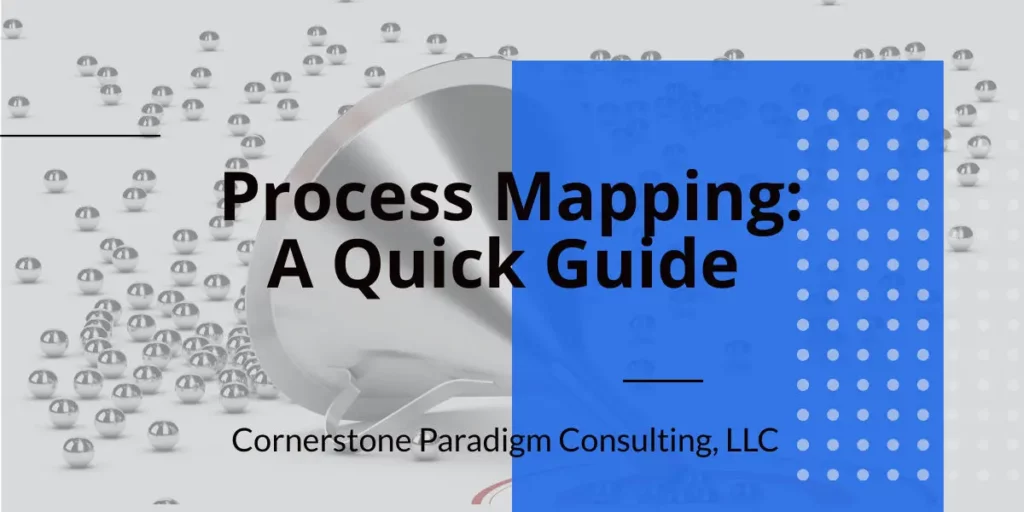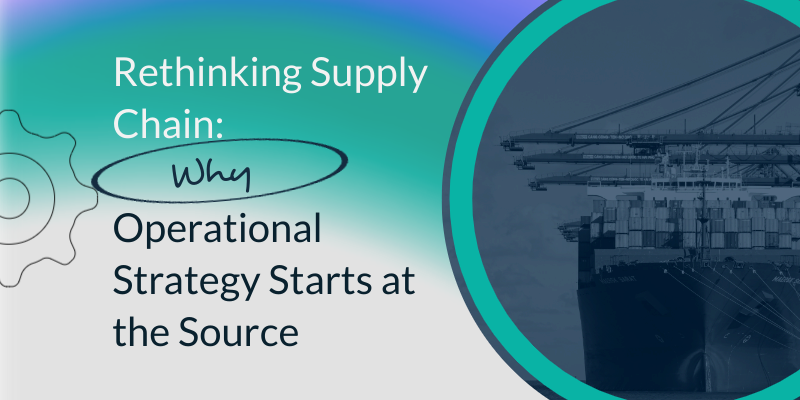Charting Your Course: How Process Mapping Transforms Business Strategy and Drives Efficiency
Venturing blindly into a forest without a map is like navigating business without a clear strategy – a risky move that often leads to getting lost. Just as nobody would take that forest journey without a map, companies should avoid the trap of neglecting to analyze their operations thoroughly. By delving into process mapping, businesses can uncover inefficiencies, streamline workflows, and boost productivity. This strategic approach not only helps in achieving optimal results but also fosters a culture of continuous improvement within the organization.
After all, it is crucial to map out your current state accurately to gain a clear understanding of your starting point, identify your desired destination, and strategize the best path to reach your goals. Let’s delve into the process to demonstrate how you can effectively accomplish this essential task.
Process mapping is a vital tool for achieving operational efficiency, as it allows businesses to visualize the entire workflow and identify any bottlenecks or inefficiencies. It involves documenting every step in a process, including inputs, outputs, decisions, stakeholders involved, and potential roadblocks. This visualization provides a clear overview of the existing processes and helps pinpoint
What is process mapping?
Process mapping is a vital tool for achieving operational efficiency, as it allows businesses to visualize the entire workflow and identify any bottlenecks or inefficiencies. It involves documenting every step in a process, including inputs, outputs, decisions, stakeholders involved, and potential roadblocks. This visualization provides a clear overview of the existing processes and helps pinpoint areas for improvement.
Process mapping is a continuous process that involves constant monitoring and updating to keep up with the changing business landscape. As businesses evolve, processes need to be adapted and improved to remain efficient and effective. Therefore, it is essential to incorporate process mapping as an ongoing practice within the organization.
Most businesses will have multiple processes to log across different aspects of their business. It’s crucial to prioritize and focus on one process at a time to ensure efficiency and effectiveness in managing each aspect thoroughly. By dedicating attention to individual processes, businesses can streamline operations, identify areas for improvement, and enhance overall performance. This focused approach allows for a more in-depth understanding of each process, leading to better decision-making and optimized outcomes.
Why process mapping matters
Once you have a clear idea of what really happens in your organization, it’s easier to figure out areas where things could go wrong, where risk is greater, or where you could make simplifications. For instance, you might realize that instead of the sales team manually reviewing orders, you could outsource this to technology to automate everything.
Process mapping can also be a useful tool when you’re trying to introduce a new business process, such as upgrading technology or launching a new product. By mapping out the process before implementation, businesses can identify potential roadblocks and make necessary adjustments to ensure a smooth transition. This proactive approach helps minimize disruptions and maximize the chances of success.
Additionally, process mapping can improve communication and collaboration within the organization. By visualizing each step in a process, employees from different departments can better understand their roles and responsibilities in the larger workflow.
How to start process mapping
Process mapping can look slightly different depending on the area you’re focusing on and the type of process map you want to create. However, there are a few basic steps to follow that apply in most cases.
- Identify the process to map: Start by selecting a process that you want to analyze and improve.
- Gather information: Conduct interviews, observe the process in action, and collect data to accurately document each step.
- Define the boundaries: Determine where the process starts and ends to avoid including irrelevant steps or missing critical ones.
- Create a visual representation: Use symbols, shapes, and arrows to depict the flow of the process.
- Identify areas for improvement: Analyze the process map and pinpoint areas that can be streamlined or optimized.
- Implement changes: Based on your analysis, make necessary adjustments to improve the process.
- Continuously review and update: Keep reviewing and updating your process maps to ensure they reflect any changes in the process.
By following these steps, businesses can effectively map out their processes and continuously improve operations for maximum efficiency and success. With clear and efficient processes in place, companies can avoid getting lost in the forest of business operations and reach their desired destination with greater ease. So, make sure to incorporate process mapping as a regular practice within your organization to stay on track toward achieving your goals. So, keep mapping and keep improving!
Get everyone involved
Process mapping isn’t something that can be implemented from the top down. Everyone involved in a process should be a part of creating a process map to ensure that nothing is missed. After all, this is about creating a realistic view of what your process looks like right now — not an idealized view of what you wish it looked like.
If you’re creating a process map for a new process, you’ll also want to get a few experts to help so you can make the proposed system as effective as possible.
Fill in the basics
Kickstart things by figuring out the start and end of the process, which are usually the easiest part. Then, the sequences that come in between should come easier, and you can begin to flesh out a more realistic portrayal.
You can use specialized software if you’re worried about how to create a process map.
Add in the details
Once you have the basics covered, you can move on to the smaller details, which are often crucial for success. What are the inputs and the outputs? Are there any stakeholders involved? Which metrics are you measuring?
Seek out feedback
Once you’ve completed creating your detailed process map, it’s advisable to engage third-party experts with specialized knowledge. By involving external experts, they can conduct a thorough analysis of your processes, identify areas of inefficiencies or bottlenecks, and recommend tailored solutions for enhancements. This collaborative approach can bring fresh perspectives and valuable insights to optimize your operations effectively.
When utilizing a process map to introduce a new system within your organization, it can be beneficial to seek feedback from your workforce regarding the feasibility of the proposed changes. This collaborative approach allows for a comprehensive evaluation of the potential impact on operations and promotes a sense of inclusivity within the decision-making process.
Once you’re finished implementing the optimizations, it’s time to transition into the testing phase. This is a critical step where you get to evaluate the effectiveness of the changes and consider potential adjustments based on the outcomes you observe. It’s important to be flexible and ready to adapt the optimizations as needed to achieve the desired results.
Time to pull it all together
Hopefully, having a better understanding of what process mapping is has inspired you to get started. Remember, the benefits of process mapping are truly transformative for businesses. By visually representing workflows and identifying bottlenecks, process mapping leads to increased efficiency, and enhanced decision-making capabilities and fosters improved collaboration among team members. Through meticulous planning and flawless execution, integrating process mapping can elevate your business operations to new heights. Continuously refining these processes will not only optimize performance but also drive your organization to unprecedented success. Keep honing those processes, and witness your organization flourishing like never before!
In addition to the benefits mentioned above, process mapping can also help businesses identify bottlenecks and areas where resources can be better allocated. By analyzing a visual representation of the process, business leaders can gain valuable insights into areas that may be causing delays or inefficiencies. This allows for targeted improvements and optimization, leading to overall cost savings and increased productivity.
Moreover, process mapping can also assist businesses in complying with regulations and industry standards. By creating detailed documentation of processes, companies can ensure that they are following all necessary protocols and can easily identify any gaps or areas for improvement.
By incorporating process mapping into their operations, businesses can stay agile and continue to evolve and improve as needed. It is an essential tool for modern business success and should be embraced by organizations of all sizes and industries. So, don’t wait any longer – start process mapping today and see the positive impact it can have on your organization! Remember, a well-mapped process is a well-managed one. Keep mapping and keep improving to achieve your business goals efficiently.
In summary
Process mapping is a powerful tool for businesses to achieve operational efficiency and continuous improvement. By visualizing processes, identifying areas for improvement, and implementing necessary changes, companies can streamline workflows, increase productivity, and enhance overall performance. Incorporating process mapping as an ongoing practice within the organization ensures that processes remain relevant and effective in the ever-evolving business landscape. So, whether it’s upgrading technology or launching a new product, process mapping can provide valuable insights and pave the way for success.
Still have questions? We’ve helped countless clients build a process map and improve their operations so they can boost productivity and save money. To find out more, book a consultation today.







